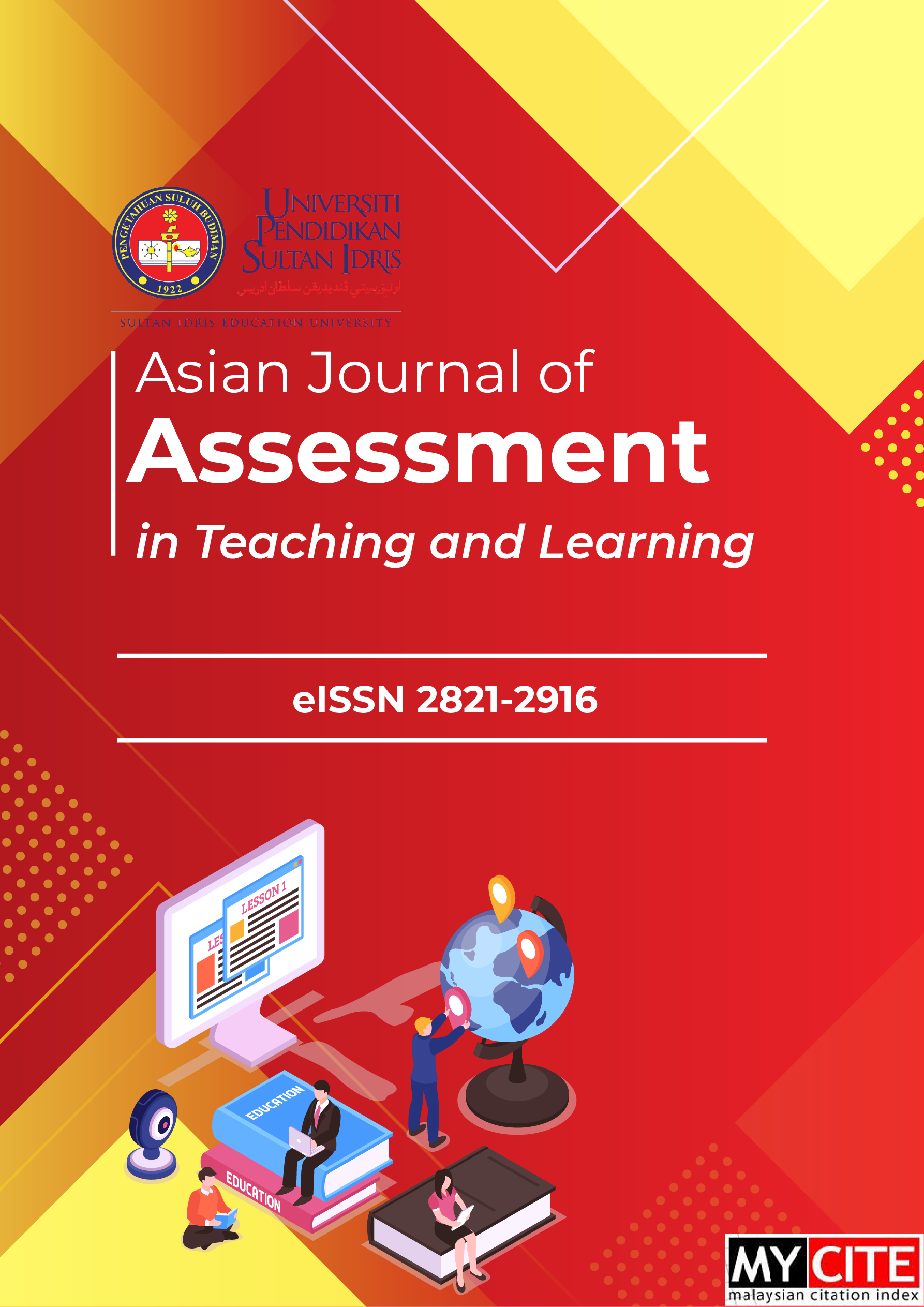Perception of Undergraduate Students Toward Mode of Learning in Higher Education Institution: The Impact of COVID-19
DOI:
https://doi.org/10.37134/ajatel.vol13.2.2.2023Keywords:
Hybrid Mode Learning, Academic Performances, UniversityAbstract
Hybrid mode of learning is an education method that combines online learning and traditional learning (face to face). In semester A212, Universiti Utara Malaysia (UUM) was conducted hybrid mode of learning in delivering classes. This selection of method has raised different opinions from the students. Therefore, this study examines the UUM undergraduate students perception towards mode of learning in the university. Convenience sampling method was used to collect the data. While frequency analysis and simple logistic regression analysis were adopted as statistical methods in analysing the data. Whereas R programming, Statistical Package for Social Science (SPSS) and Excel software was used as data analysis tools. Two hundred sixty-eight (268) UUM undergraduate students were chosen as respondents in this study. They were given a set of question regarding the mode of learning. Student’s academics in the form of Cumulative Grade Point Average (CGPA), their major reasons to support and against hybrid mode of learning, student’s preference of study environment, and their total daily hours spending on their study during hybrid mode of learning are investigated to determine the relationship between the mode of learning and respondents CGPA. The result indicates that the major reason that students supported hybrid mode learning is because this mode of learning helps in a way of reducing the internet connection problem. This is because the university took seriously in making sure that the internet facilities is at the best condition. Overall, students have a preference for hybrid mode learning and there is no relationship between total daily hours that they spent on study during hybrid mode learning towards their CGPA.
Downloads
References
Alghamdi, A., Karpinski, A. C., Lepp, A., & Barkley, J. (2020). Online and face-to-face classroom multitasking and academic performance: Moderated mediation with self-efficacy for self-regulated learning and gender. Computers in Human Behavior, 102, 214-222.
Baber, H. (2020). Determinants of Students’ Perceived Learning Outcome and Satisfaction in Online Learning during the Pandemic of COVID19. Journal of Education and E-Learning Research, 7(3), 285–292.
Datamentor. (2022). R Tutorial - Learn R Programming. Retrieved from: https://www.datamentor.io/r-programming/
Baber, H. (2022). Social interaction and effectiveness of the online learning–A moderating role of maintaining social distance during the pandemic COVID-19. Asian Education and Development Studies, 11(1), 159-171.
D. Nambiar. (2020). The impact of online learning during COVID19: students' and teachers’ perspective. International Journal of Indian Psychology, 8(2), 783-793.
George, D., & Mallery, P. (2003). SPSS for Windows step by step: A simple guide and reference. 11.0 update (4th ed.). Boston: Allyn & Bacon.
Kumi Yeboah, A., & Smith, P. (2016). Relationships Between Minority Students Online Learning Experiences and Academic Performance. Online Learning, 20(4).
Mpungose, C. B. (2020). Is Moodle or WhatsApp the preferred e-learning platform at a South African university? First-year students’ experiences. Education and information technologies, 25(2), 927-941.
Nambiar, D. (2020). The impact of online learning during COVID-19: students’ and teachers’ perspective. The International Journal of Indian Psychology, 8(2), 783-793.
Patricia Aguilera-Hermida, A. (2020). College students’ use and acceptance of emergency online learning due to COVID-19. International Journal of Educational Research Open, 1, 100011.
Paul Lavrakas. (2008). Encyclopedia of Survey Research Methods. Retrieved from: https://doi.org/10.4135/9781412963947.n105
Statistics Solutions. (2021, August 10). Factor Analysis. Retrieved from: https://www.statisticssolutions.com/free-resources/directory-of-statistical-analyses/factor-analysis/
Selvaraj, A., Radhin, V., Nithin, K. A., Benson, N., & Mathew, A. J. (2021). Effect of pandemic based online education on teaching and learning system. International Journal of Educational Development, 85, 102444
Shamsuddin, N., & Kaur, J. (2020). Students' Learning Style and Its Effect on Blended Learning, Does It Matter?. International Journal of Evaluation and Research in Education, 9(1), 195-202.
Singh, J., Steele, K., & Singh, L. (2021). Combining the best of online and face-to-face learning: Hybrid and blended learning approach for COVID-19, post vaccine, & post-pandemic world. Journal of Educational Technology Systems, 50(2), 140-171.
Stephanie Glen. (2021). "Sample Size in Statistics (How to Find it): Excel, Cochran’s Formula, General Tips" From StatisticsHowTo.com: Elementary Statistics for the rest of us! Retrieved from: https://www.statisticshowto.com/probability-and-statistics/find-sample-size/
Tate, T., & Warschauer, M. (2022). Equity in online learning. Educational Psychologist, 57(3), 192-206.
Tavakol, M. & Dennick, R. (2011). Making Sense of Cronbach’s Alpha. International Journal of Medical Education, 2, 53-55.
Universiti Utara Malaysia (UUM) - Malaysia Students Web. (2022). The Internet Archive. Retrieved from: https://web.archive.org/web/20140122215101/http://web.malaysia-students.com/universiti-utara-malaysia-uum
Yuliansyah, A., & Ayu, M. (2021). The implementation of project-based assignment in online learning during covid-19. Journal of English Language Teaching and Learning, 2(1), 32-38.
Zhan, Z., & Mei, H. (2013). Academic self-concept and social presence in face-to-face and online learning: Perceptions and effects on students’ learning achievement and satisfaction across environments. Computers & Education, 69, 131–138.
Zhu, C. (2017). University student satisfaction and perceived effectiveness of a blended learning course. International Journal of Learning Technology, 12(1), 66.
Downloads
Published
How to Cite
Issue
Section
License
Copyright (c) 2023 Choong Jia Shin, Zahayu Md Yusof, Masnita Misiran

This work is licensed under a Creative Commons Attribution-NonCommercial-ShareAlike 4.0 International License.





